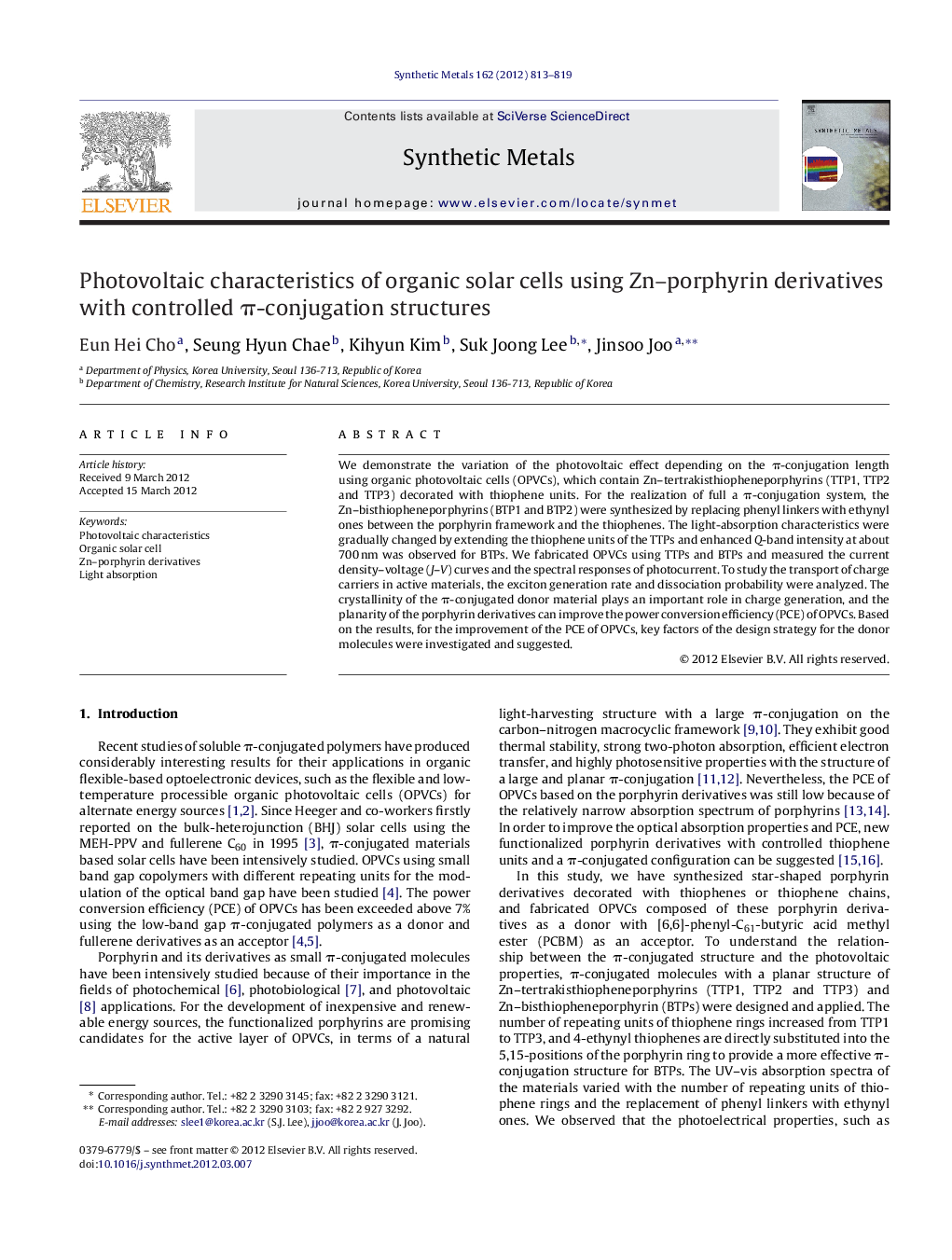| Article ID | Journal | Published Year | Pages | File Type |
|---|---|---|---|---|
| 1442126 | Synthetic Metals | 2012 | 7 Pages |
We demonstrate the variation of the photovoltaic effect depending on the π-conjugation length using organic photovoltaic cells (OPVCs), which contain Zn–tertrakisthiopheneporphyrins (TTP1, TTP2 and TTP3) decorated with thiophene units. For the realization of full a π-conjugation system, the Zn–bisthiopheneporphyrins (BTP1 and BTP2) were synthesized by replacing phenyl linkers with ethynyl ones between the porphyrin framework and the thiophenes. The light-absorption characteristics were gradually changed by extending the thiophene units of the TTPs and enhanced Q-band intensity at about 700 nm was observed for BTPs. We fabricated OPVCs using TTPs and BTPs and measured the current density–voltage (J–V) curves and the spectral responses of photocurrent. To study the transport of charge carriers in active materials, the exciton generation rate and dissociation probability were analyzed. The crystallinity of the π-conjugated donor material plays an important role in charge generation, and the planarity of the porphyrin derivatives can improve the power conversion efficiency (PCE) of OPVCs. Based on the results, for the improvement of the PCE of OPVCs, key factors of the design strategy for the donor molecules were investigated and suggested.
► Fabrication of organic solar cells using Zn–porphyrin derivatives. ► Evolution of light-absorption spectra with controlled π-conjugation structures. ► Variation of photoelectrical and incident-photon-to-current properties by structure. ► Suggest design strategy for donor molecules to improve power conversion efficiency.
